Sikkim Weather in July
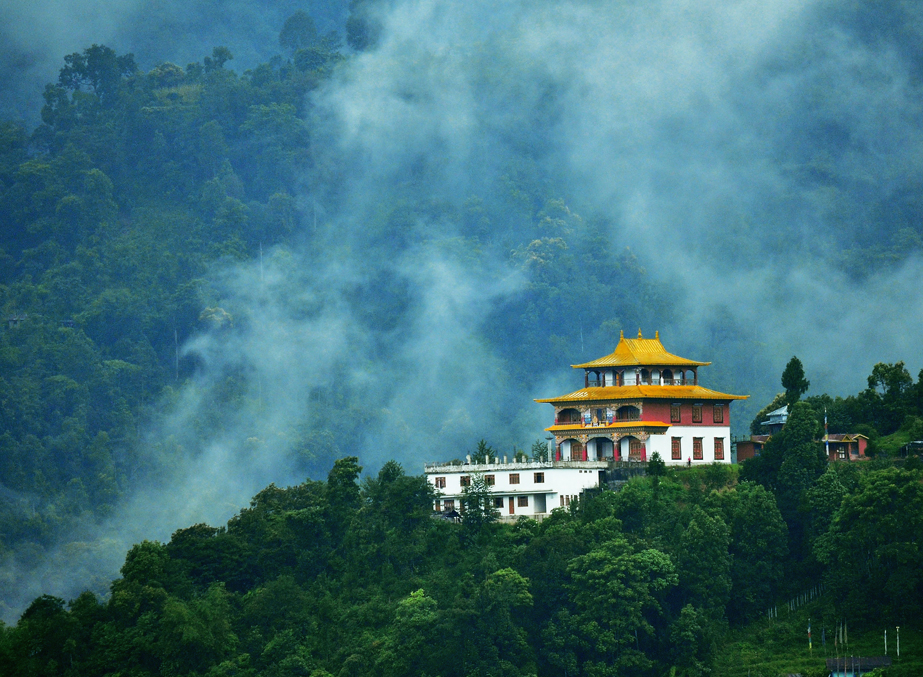
The monsoons lend a unique charm to the Sikkim Himalayas every year. In July, when it is at its peak, thick clouds crown mountain tops while rain-washed slopes reflect the brightest shades of green you will ever see. The Teesta comes alive in all its raging glory. Wildflowers burst in to bloom in small patches here and there while sunsets colour the sky in shocking shades of orange, pink and purple. And most important of all, the number of tourists visiting sees a sharp decline. The conditions are ideal for a passionate traveller who is keen on experiencing the beauty of Sikkim in a completely different avatar.
July also happens to be the birthday month of Guru Padmasambhava, Sikkim’s revered guardian deity. Known as Tsungkar Tshechu, the festival is celebrated with great pomp and joy throughout Sikkim. The Rumtek Monastery is one of the main venues of celebration. Special prayers are held and an enthralling Chaam Dance enacting the eight manifestations of Padmasambhava is performed at the monastery grounds.
The Monsoon Delights of East Sikkim
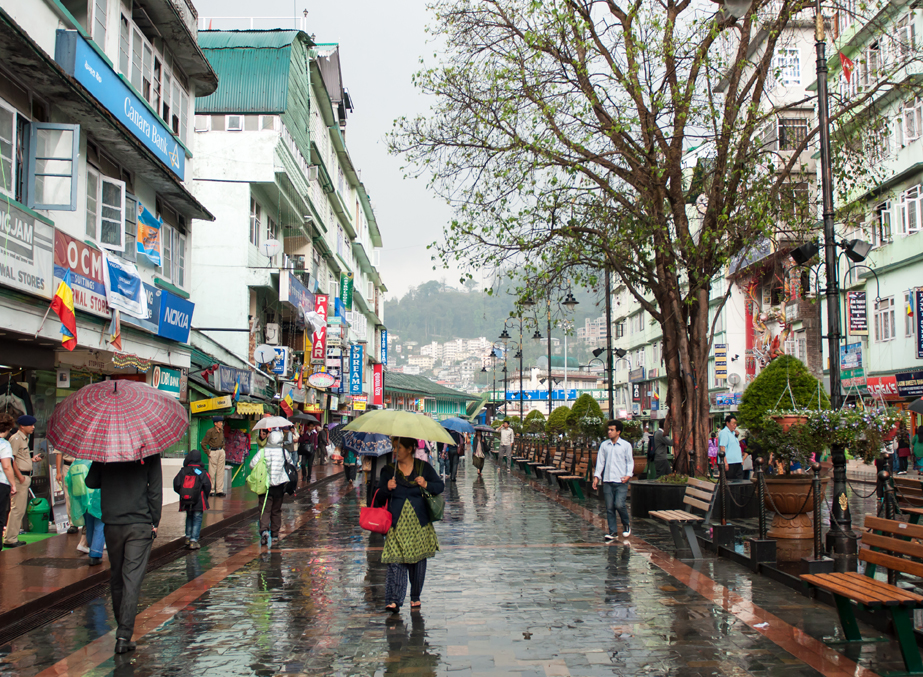
Gangtok, Sikkim’s capital experiences temperatures between 17°C to 21°C in the month of July. Explore the numerous cafes, bookstores, souvenir shops, restaurants and bars in the heart of the city, M.G Marg. The exceptionally clean boulevard complete with fountains and Victorian lampposts will remind you of European cities. Take a walk to the Do Drul Chorten, a magnificent stupa in the middle of Gangtok that is said to protect the city from evil spirits. Find out more about Sikkim’s rich history and culture at the Namgyal Institute of Tibetology. It houses some of the rarest collections of coins, thangkas and sacred manuscripts apart from a brilliant library. Visit the grand Tsuklakhang Palace Monastery. The gorgeous structure complete with a royal chapel, assembly hall and a monastery served as the venue for coronation, marriages and other important ceremonies for the erstwhile kingdom’s royal family. Go to the Flower Exhibition Centre at the Ridge, about 20 minutes away from M.G Marg. You will be stunned by the sheer variety of flowers on display here. Since it is the peak of monsoon, don’t miss out on visiting the Banjhakri Waterfall. Located about 7 km away from the main city, the waterfall is at its best during this time of the year.
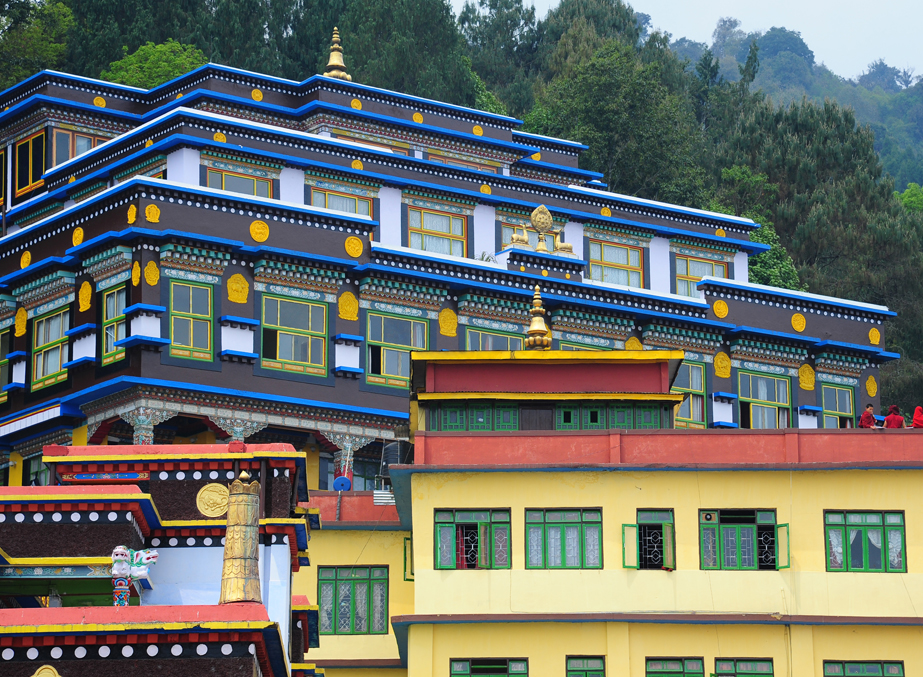
Rain or shine, you cannot afford to not visit the famed Rumtek Monastery. Located at a distance of 23 km away from Gangtok, the grand three-storey building is the epitome of Tibetan Buddhist architecture. The monastery belongs to the Karma Kagyu or the Black Hat sect of Tibetan Buddhism and is home to some of the rarest specimens of Buddhist artwork—from beautiful thangkas and murals to intricate woodwork.
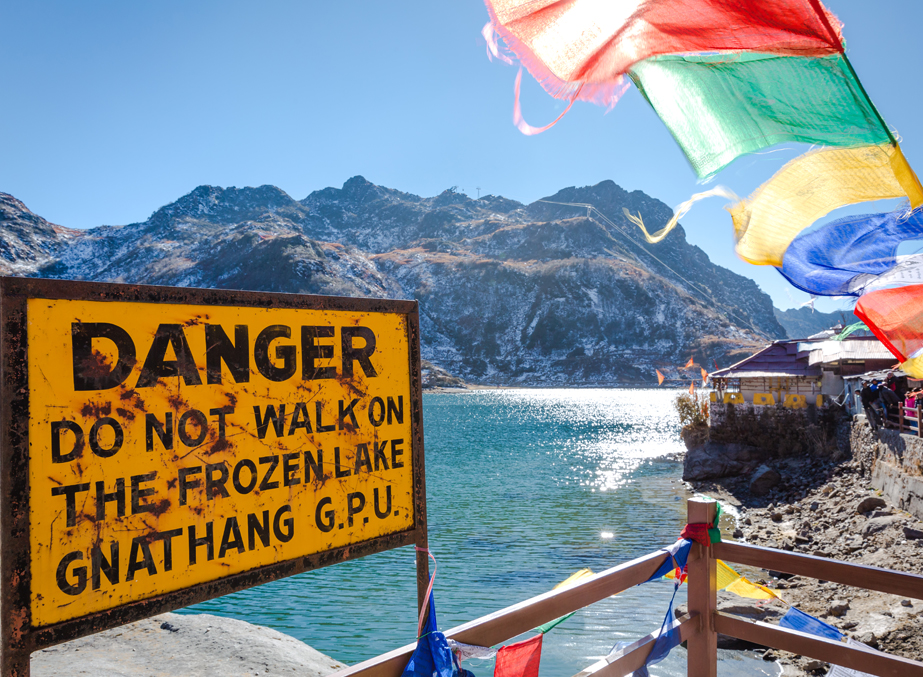
If the rain gods are in your favour, you could hire a cab to take you to Nathula, the legendary mountain pass at 14,000 feet that was once a part of the old Silk Route that connected India to China via Tibet. The temperature here remains a pleasant 8°C to 11°C in the month of July. If you do manage to make it then you must visit Lake Tsomgo, a glacial lake on the way to Nathula. Almost a kilometer in length, the lake is revered by locals and is said to change its colour every season. In fact, it is said that monks from local monasteries make predictions about the future based on these colour changes.
The Much-avoided North Sikkim Bleakness
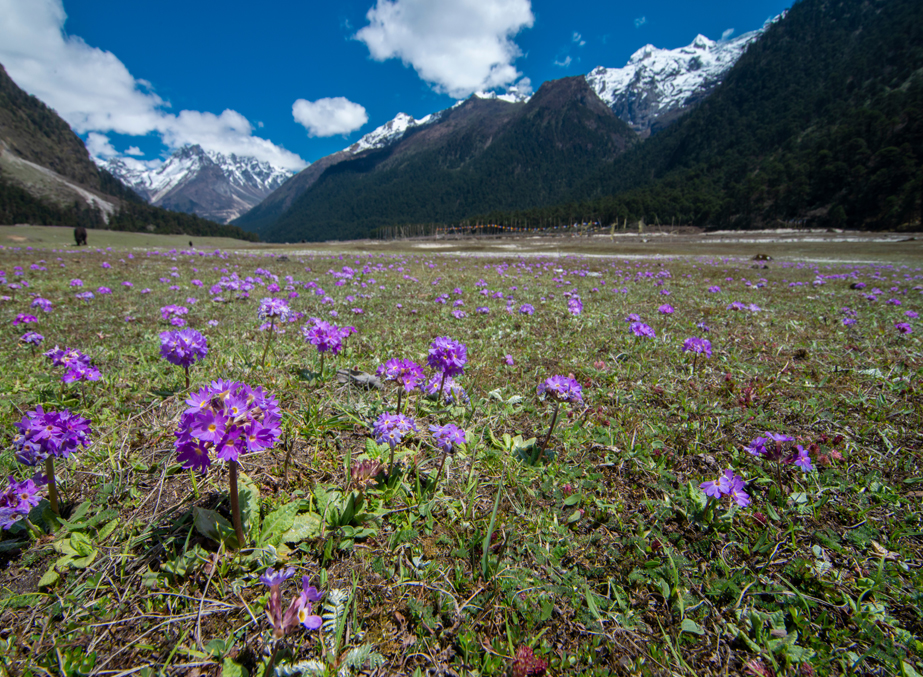
Although Yumthang Valley, Lachen and Lachung are some of the most popular destinations in North Sikkim, they are best avoided during this time of the year owing to their high altitude. The incessant rains during monsoons often cause landslides which in turn lead to road blocks.
Beautiful, Rain-washed West Sikkim
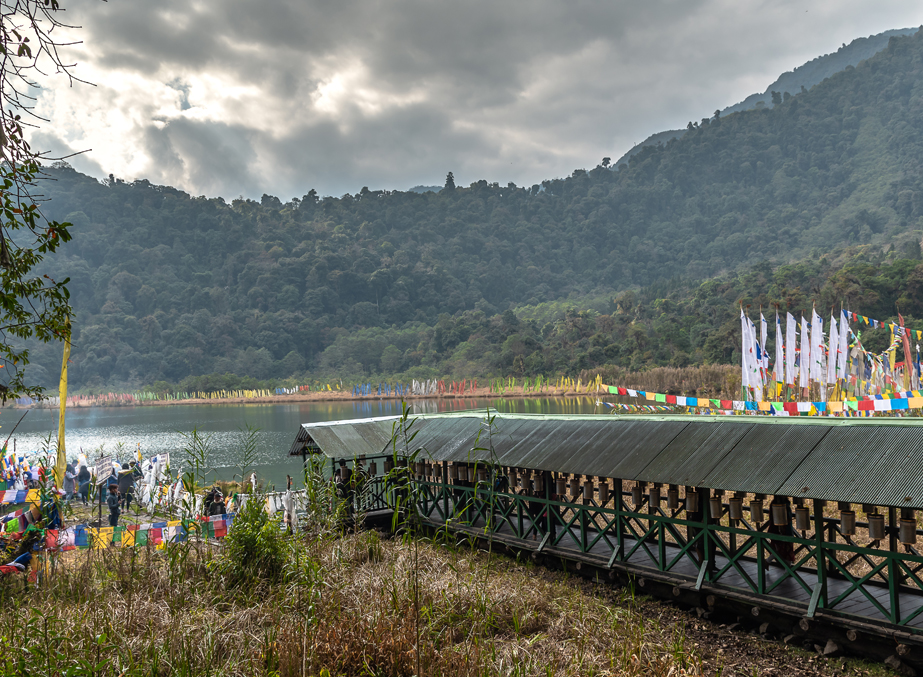
Instead head to Pelling to enjoy the wonders of West Sikkim. This little town, about 113 km from Gangtok, experiences temperature between 18°C to 25°C in July making it perfect for a monsoon getaway. Though the town of Pelling in itself is nothing but a bunch of shops and hotels but its proximity to some of Sikkim’s major tourist attractions makes it an ideal base. About 32 km from Pelling is the stunning Khecheopalri Lake. Surrounded by dense forests all around, the lake is revered by locals as a part of the sacred valley of Demazong. Hike up to the ancient Rabdenste Ruins for a taste of Sikkim’s rich history. Known as the second capital of the kingdom of Sikkim, Rabdenste is home to the old palace complex which now lies in an enchanting state of ruin, covered in moss and nestled deep in a thick chestnut grove. A stone’s throw away from Rabdentse is the Pemyangtse Monastery. It was built in the 17th century by Lhatsun Chenpo, one of the three monks who crowned the first king of Sikkim. The historic town of Yuksom is a must visit if you are exploring West Sikkim. Located at a distance of 40 km from Pelling, this little town was the first capital of Sikkim and it was here that the first Chogyal (king) was crowned in 1641. A short walk away from the main bazaar will take you to Norbugang Park which is home to the original coronation throne or Norbugang. Take a cab up to the Dubdi Monastery, established by the Chogyal himself in 1647. It is said to be the oldest in Sikkim. The exquisitely constructed monastery is surrounded by beautiful landscaped gardens. On the way from Pelling to Yuksom, don’t forget to stop at the. The rain during monsoon adds to the beauty of this already gorgeous waterfall. Kanchendzonga Falls.
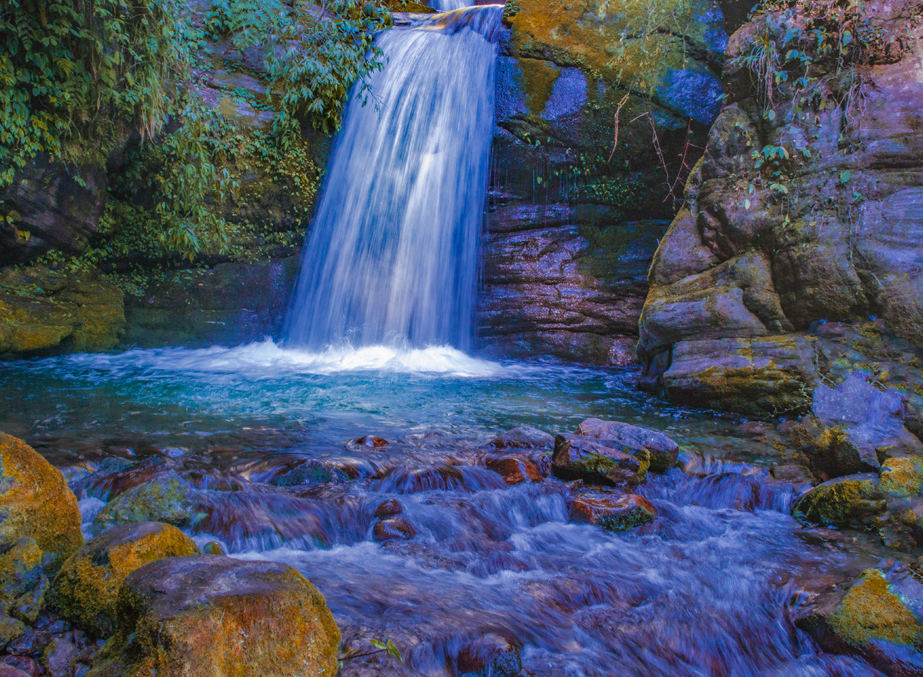
The Cloudbursts of South Sikkim
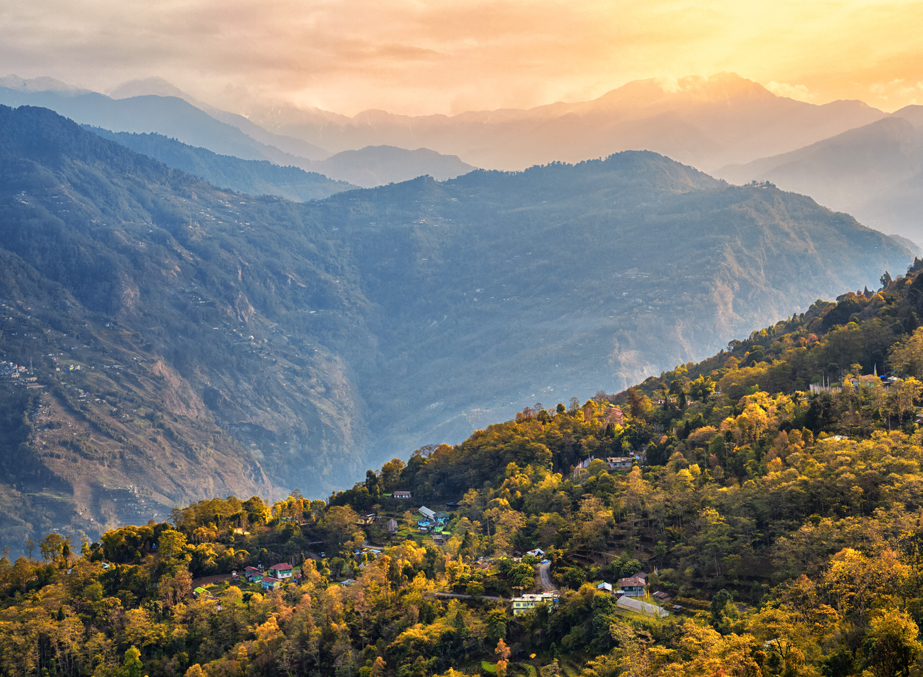
South Sikkim is another part of the tiny Himalayan state that is worth exploring during monsoons, owing to its relatively lower altitude. Namchi, the headquarters of the south district is located about 8 km away from Gangtok. In July the temperature here fluctuates between 19°C to 25°C. Perched at a unique located, Namchi offers some breath-taking views of the Kanchendzonga and the Rangit Valley, provided the clouds don’t obstruct your view, of course. Walk up to Samdrupste Hill, a landscaped park on top of a hill which is a short walk from the main town. The giant statue of Padmasambhava, the guardian deity of Sikkim, is hard to miss. Towering over the entire town, at a height of almost 140 feet, it is said to be the tallest statue of the Buddhist master in the world. Around 3 km away from the main town is the Namchi Rock Garden, right above Ngadak Monastery. The garden is replete with exotic flowers of all kinds and attracts wide variety of birds during monsoons.
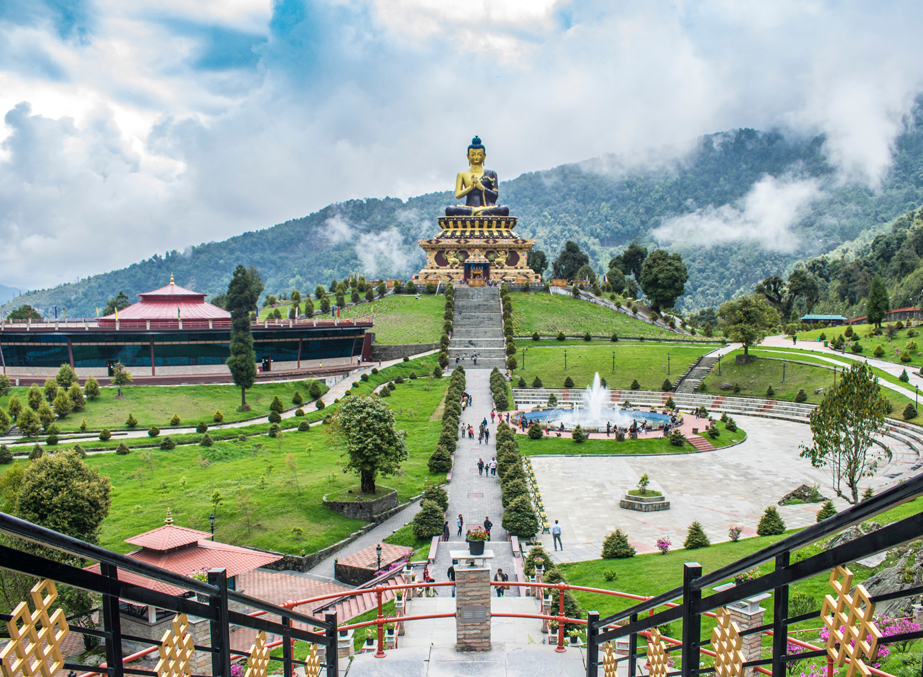
Though July is perfect for exploring Sikkim minus the touristy crowd, it is advisable to keep your itinerary flexible. Non-stop rains often cause landslides and roadblocks. Gather sufficient information before visiting any place to avoid affected areas and turn to the locals for guidance, for they do know best in this case.
People also Read Sikkim
People also Read Bhutan

Subscribe to us
Subscribe to our newsletter and stay updated

Request a call back
Our experts would love to create a package just for you!
Sikkim Travel Information at a Glance
Find the authentic information on how to plan a hassle free tour to Sikkim. Travalghar puts together for you relevant details on how to reach Sikkim along with information on different means of transportation and the best time to visit. Also explore the different attractions and destinations in Sikkim with the help of our map, made easy for you to navigate.
- About sikkim
- Sikkim Darjeeling Tour Packages
- Visiting Sikkim in Winters
- South Sikkim
- Sikkim Tourism Destinations
- How to Reach Sikkim
- Visiting Sikkim in Summers
- West Sikkim
- Sikkim Tourist Attractions
- Sikkim Travel by Road
- Visiting Sikkim in Monsoon
- East Sikkim
- Best Things to Do in Sikkim
- Sikkim Travel by Train
- Darjeeling Gangtok Tour Packages
- North Sikkim
- Best Time to Visit Sikkim
- Sikkim Travel by Air
- Entry Formalities to Sikkim
- Trekking in Sikkim
- Honeymoon in Sikkim
- Sikkim Tourism Map
- Restricted Area Permit
- Hill stations in Sikkim
- Gangtok Tour Packages
- Sikkim Tour Packages
- Places to visit in Sikkim
- Do's and Dont's















